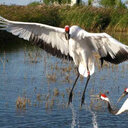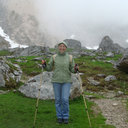Disruption of a CAROTENOID CLEAVAGE DIOXYGENASE 4 gene converts flower colour from white to yellow in Brassica species.
Keywords
Abstract
In Brassica napus, yellow petals had a much higher content of carotenoids than white petals present in a small number of lines, with violaxanthin identified as the major carotenoid compound in yellow petals of rapeseed lines. Using positional cloning we identified a carotenoid cleavage dioxygenase 4 gene, BnaC3.CCD4, responsible for the formation of flower colour, with preferential expression in petals of white-flowered B. napus lines. Insertion of a CACTA-like transposable element 1 (TE1) into the coding region of BnaC3.CCD4 had disrupted its expression in yellow-flowered rapeseed lines. α-Ionone was identified as the major volatile apocarotenoid released from white petals but not from yellow petals. We speculate that BnaC3.CCD4 may use δ- and/or α-carotene as substrates. Four variations, including two CACTA-like TEs (alleles M1 and M4) and two insertion/deletions (INDELs, alleles M2 and M3), were identified in yellow-flowered Brassica oleracea lines. The two CACTA-like TEs were also identified in the coding region of BcaC3.CCD4 in Brassica carinata. However, the two INDELs were not detected in B. napus and B. carinata. We demonstrate that the insertions of TEs in BolC3.CCD4 predated the formation of the two allotetraploids.




